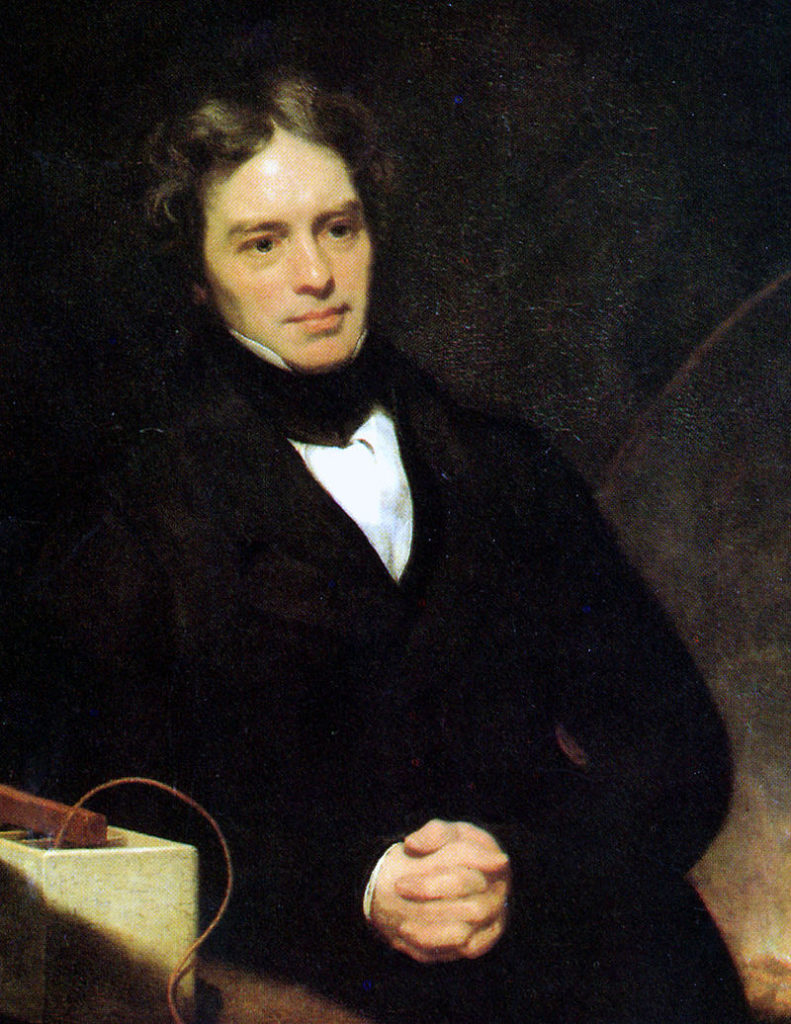Heroes of Science: Michael Faraday
by Scott Dutfield · 13/03/2020

The scientist behind electromagnetic induction who played a key role in inspiring Einstein…
Michael Faraday was born in 1791 to a poor family who couldn’t afford to educate him. Few could have guessed that he would go on to massively advance our understanding of electricity and more. He learned to read and write at Sunday school, and became a bookbinder’s apprentice in his teens.
Faraday loved to read and he worked his way through the books that he was binding, developing a keen interest in chemistry, electricity and magnetism. His newfound interest in science led him to attend a series of four lectures by chemist Humphry Davy, where he took extensive notes in the hope of securing employment at the Royal Institution. Eventually, his persistence paid off and he managed to get a job working as a laboratory assistant to Professor Davy.
Faraday worked for Davy for several years, during which time the pair travelled to Europe. While with Davy, Faraday made several discoveries in the field of chemistry, including identification of the ring-shaped hydrocarbon benzene. He also made two new chemical compounds: hexachloroethane, which now forms the basis of military smoke grenades, and tetrachloroethylene, which is widely used to
dry-clean clothes even to this day.
Faraday’s major breakthroughs were not in chemistry though but in physics. In 1820, Hans Christian Oersted discovered that an electrical current could produce a magnetic field. Faraday was convinced that the opposite must also be true, and began his most influential work on electromagnetic induction. His first discovery came shortly after, when he showed that by wrapping two insulated coils of wire around an iron ring a current could be transferred from one coil to another in a process known as mutual inductance.
Keen to further this research, Faraday continued investigating the electromagnetic properties of materials, and this led to his greatest achievement of all in 1831 – the discovery of electromagnetic induction (see ‘The big idea’ for more information).
Faraday’s work on electromagnetism sparked the interest of other scientists and mathematicians, which led to William Thomson writing to him, suggesting that it was mathematically possible for magnets to alter the plane of polarised light. Faraday had been interested in this idea himself for a long time, conducting experiments to show how light and magnetic fields interact with each other. This was one of the first steps towards the realisation that visible light is actually electromagnetic radiation.
Later in life Faraday’s health declined, but he continued to lecture at the Royal Institution. His scientific contributions were acknowledged by the royal family and, in 1858, Faraday moved to a home in Hampton Court, granted to him by Queen Victoria. He died in 1867 and, having previously refused a burial site at Westminster Abbey, he was buried in Highgate Cemetery.
The Big Idea
Faraday was a prolific scientist, but is best known for his work on electromagnetic induction. Faraday’s Law states that a change in the magnetic environment near to a coil of wire will induce a voltage in the coil. Faraday developed a spinning copper disc, which rotates next to a static magnetic field (provided by a bar magnet). As the disc spins through the magnetic field, a potential difference is generated between the centre and the edge of the disc, creating a steady direct current. Faraday’s disc was inefficient, but it provided the basis for the development of transformers, inductors, electrical motors and generators.
5 things to know about… Michael Faraday
Faraday developed an early version of the Bunsen burner and also discovered the laws
of electrolysis.
Faraday was the first to report nanoparticles’ properties, noticing that gold colloids (sub-micrometre-sized gold particles dispersed in a liquid) have different properties to solid gold.
He declined a knighthood offered by Queen Victoria, and refused to accept presidency of the Royal Society twice.
Faraday founded the Royal Institution’s (RI) Christmas Lectures. To this day, fun science demonstrations for children are broadcast every Christmas in the UK by the RI.
Italian priest Francesco Zantedeschi and US scientist Joseph Henry were working on electromagnetic induction too. Which man came up with the idea first is still contested.
This article was originally published in How It Works issue 52
For more science and technology articles, pick up the latest copy of How It Works from all good retailers or from our website now. If you have a tablet or smartphone, you can also download the digital version onto your iOS or Android device. To make sure you never miss an issue of How It Works magazine, subscribe today!





